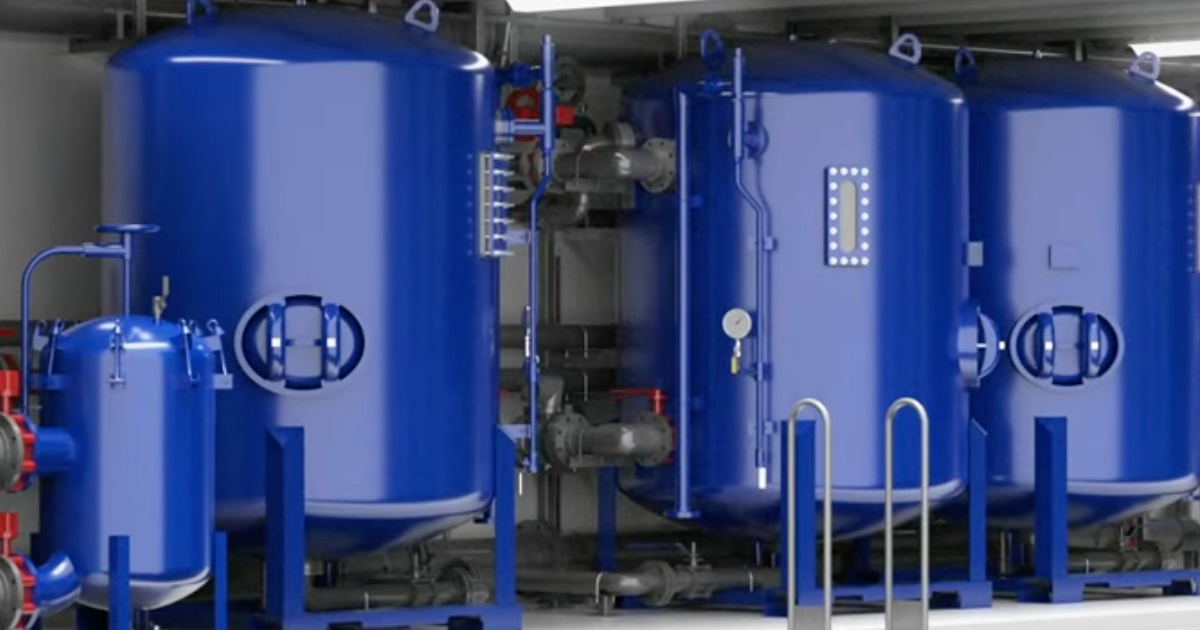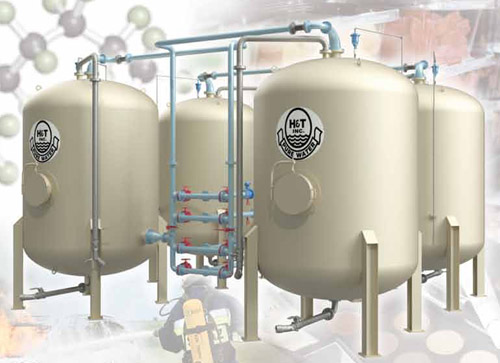How PFAS Treatment Reduces Environmental Impact and Improves Public Safety
How PFAS Treatment Reduces Environmental Impact and Improves Public Safety
Blog Article
Your Guide to PFAS Treatment Technologies and Conveniences
The prevalence of PFAS contamination in water resources necessitates a detailed understanding of available treatment modern technologies. Each modern technology not only targets details PFAS compounds however also plays a crucial duty in enhancing total water quality and shielding environmental honesty.
Understanding PFAS Contamination
Understanding PFAS contamination is essential for resolving its prevalent influence on ecological and human health (m270 pfas treatment). Per- and polyfluoroalkyl substances (PFAS) are a group of synthetic chemicals commonly made use of in numerous commercial and customer items as a result of their water- and grease-resistant properties. Typically discovered in firefighting foams, non-stick kitchenware, and water-repellent materials, PFAS have actually gone into the atmosphere with production procedures, wastewater discharges, and leaching from land fills
As soon as released, these substances continue in the setting, leading to prevalent contamination of dirt and water sources. Their one-of-a-kind chemical framework, defined by strong carbon-fluorine bonds, renders them immune to destruction, causing a sensation called "permanently chemicals." As a result, PFAS can build up in the human body and the food chain, possibly causing adverse wellness impacts, including body immune system disturbance, developmental problems, and an enhanced risk of particular cancers.
Regulative agencies and wellness organizations are significantly recognizing the significance of PFAS contamination, triggering initiatives to keep track of, analyze, and alleviate its effects. Understanding the paths of PFAS contamination is crucial for notifying public law and establishing reliable techniques to shield both ecological and human health.
Introduction of Therapy Technologies
Various therapy modern technologies have been developed to attend to the obstacles posed by PFAS contamination in water and soil. These modern technologies can be broadly categorized right into numerous categories, each with its special devices and effectiveness in removing PFAS compounds.
One prominent strategy is ion exchange, which makes use of resin materials to capture and get rid of PFAS from infected water. An additional modern technology, progressed oxidation procedures (AOPs), utilizes strong oxidants and ultraviolet light to break down PFAS right into much less hazardous compounds.

Triggered Carbon Filtering
Triggered carbon filtering is a commonly made use of technique for the elimination of PFAS from infected water, recognized for its capacity to adsorb a wide array of natural substances. This technology employs activated carbon, a highly permeable product with a comprehensive surface, which assists in the binding of PFAS particles with physical adsorption. The efficiency of triggered carbon in removing PFAS is influenced by numerous factors, including the sort of carbon used, the contact time, and the focus of PFAS in the water.
Among the advantages of activated carbon purification is its versatility; it can be implemented in numerous setups, such as granular triggered carbon (GAC) systems or powdered activated carbon (SPECIAL-INTEREST GROUP) systems. GAC systems are normally utilized in larger-scale applications, while political action committee can be used in smaller sized or momentary configurations. Additionally, the technology is fairly simple to run and keep, making it available for numerous water therapy facilities.

Ion Exchange Systems
Ion exchange systems stand for one more effective approach for the elimination of PFAS from polluted water, complementing techniques like activated carbon purification. These systems operate the concept of trading ions in the water with ions held on a resin product. Ion exchange resins can be especially formulated to target the adversely charged PFAS substances, successfully capturing them and permitting cleaner water to pass through.
Among the primary advantages of ion exchange systems is their capacity to eliminate a broad variety of PFAS, consisting of both long-chain and short-chain variations. This versatility makes them see it here ideal for various applications, varying from metropolitan water treatment to commercial processes. Furthermore, ion exchange systems can often accomplish reduced detection restrictions for PFAS contrasted to a few other treatment techniques, therefore boosting water quality.
Nevertheless, it is important to keep an eye on and manage the regeneration of ion exchange media, as the performance can decrease with time due to saturation. Proper upkeep and substitute of the material are essential for sustaining the system's efficiency. On the whole, ion exchange systems provide a dependable and reliable remedy for PFAS elimination, contributing substantially to secure alcohol consumption water criteria and environmental management.
Advanced Oxidation Processes
Advanced Oxidation Processes (AOPs) use effective oxidants to properly degrade PFAS compounds in infected water. These cutting-edge therapy approaches generate highly responsive varieties, such as hydroxyl radicals, that can damage down intricate PFAS particles into less dangerous by-products. m270 pfas treatment. AOPs commonly use mixes of ultraviolet (UV) light, ozone, hydrogen peroxide, or Fenton's reagent, improving the oxidation possibility and boosting destruction performance
The main directory advantage of AOPs depends on their ability to target a broad series of PFAS substances, including both long-chain and short-chain variations. This flexibility is important, as PFAS contamination typically involves mixtures of different compounds with differing chemical frameworks. Moreover, AOPs can be integrated into existing water therapy systems, making them a functional solution for many districts and markets.
Nevertheless, the implementation of AOPs can be resource-intensive, calling for cautious consideration of functional expenses and power consumption. In addition, while AOPs work in breaking down PFAS, they might not completely remove all by-products, requiring further therapy steps - m270 pfas treatment. On the whole, AOPs represent a promising opportunity for addressing PFAS contamination, adding to cleaner water resources and enhanced public health and wellness protection

Conclusion
By picking the suitable technology, neighborhoods can improve water quality, shield public health, and minimize the environmental threats associated with PFAS direct exposure. Continued research and execution of these methods are crucial for effective monitoring of PFAS contamination in affected locations.
Report this page